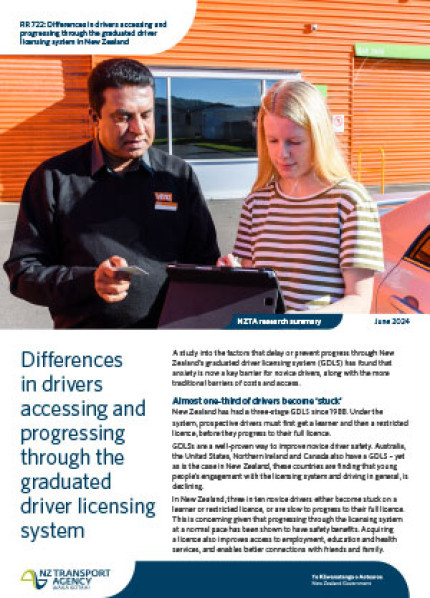Published: June 2024 | Category: Healthy and safe people , Research programme , Research & reports | Audience: General
Since 1988, New Zealand has had a three-stage graduated system for gaining a driver’s licence. To get their full licence under the system, prospective drivers must first get a learner licence and then a restricted licence.
Graduated driver licensing systems (GDLS) are a well-proven way to improve novice and new-driver safety. Yet, in New Zealand, as in other countries that have a GDLS, young people’s engagement with the licensing system and driving in general, is declining.
In New Zealand, three in ten novice drivers either become stuck on the learner or restricted licence, or are slow to progress to their full licence. This is concerning given New Zealand’s high fatality rates for youth drivers and car occupants; research shows that drivers who progress through the GDLS at a relatively normal pace are significantly less likely to be involved in a crash.
To this end, the study, which included a national survey of novice drivers, examined the key barriers to access to and progression through the GDLS. It identified the 10 characteristics of people who have the most difficulty progressing, looked at what is happening internationally to support novice drivers, and recommended key solutions to help those groups most at risk of becoming stuck to progress.
Recommendations were also made to move New Zealand towards a more inclusive licensing system.
Keywords:
anxiety; barrier; driver training; fatality; GDLS; graduated driver licensing system; learner; novice; progress; restricted
Authors:
Jared Thomas, WSP, Ahuriri | Napier
Bill Frith, WSP, Te Awa Kairangi ki Tai | Lower Hutt
Daniel Cooper, WSP, Te Awa Kairangi ki Tai | Lower Hutt
Louise Malcolm, WSP, Te Awa Kairangi ki Tai | Lower Hutt
